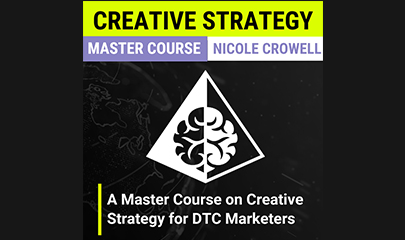Crashes and Crises: Lessons from a History of Financial Disasters By Connel Fullenkamp
$169,00 $5,00
Crashes and crises: Lessons from a history of financial disasters – Digital Download!
Let’s embark on a captivating adventure to uncover remarkable insights that spark your curiosity and elevate your understanding

Crashes and Crises: Lessons from a History of Financial Disasters By Connel Fullenkamp
Overview

Crashes and crises: Lessons from a history of financial disasters
Financial disasters have often been likened to natural disasters both strike unexpectedly, leaving destruction in their wake. The devastating realities of these events afford society both pain and valuable lessons. Crashes and crises: lessons from a history of financial disasters by Connel Fullenkamp traverses over four centuries of financial upheavals, offering insights that resonate just as profoundly today as they did at their inception. From the whimsical Tulip Mania of the 1600s to the haunting echoes of the Great Recession of 2007-2009, Fullenkamp’s exploration captivates both novices and seasoned minds in the realm of economics. He artfully guides readers through a multitude of financial crises, unraveling the complex interplay of economic principles and human psychology that contributes to these debacles.
The structure of the work is particularly appealing, comprising 24 lectures, each neatly contained within a 29-minute framework. This setup ensures accessibility for those with busy schedules yet is rich enough to sustain the attention of those yearning for deep insight. Fullenkamp dives into notorious financial schemes such as the South Sea Bubble and the Mississippi Bubble, elucidating their formation and ultimate collapse. His narration doesn’t merely recount events but delves into the psychological terrain that leads individuals and markets alike into financial snares. In today’s economic environment, understanding these factors overconfidence and herd mentality is not merely academic; it is essential for navigating our own financial landscapes.
The Historical Context of Financial Disasters
Understanding financial disasters requires a historical lens. Financial markets are often a reflection of the societal pulse; they ebb and flow, shaped by cultural, technological, and economic currents that define various eras. For example, Tulip Mania is regarded as one of the first recorded speculative bubbles. In the Netherlands during the 1600s, tulip bulbs became a status symbol, igniting a frenzy around their trading. Investors bought bulbs not for their horticultural value, but rather for their potential financial return. This mindset led to absurd price inflation, with some bulbs reportedly selling for more than the cost of a house. Ultimately, when the bubble burst, many were left financially devastated, a poignant reminder of the risks inherent in speculative investing.
Similarly, the South Sea Bubble and Mississippi Bubble serve as stark reminders of the fragility of financial systems. Both occurred in the early 18th century and shared similarities in their foundational attributes: misleading information and economic speculation. The lure of immense profits captured the imagination of countless investors. However, as Fullenkamp articulates, the eventual collapse of these bubbles resulted from unsustainable growth an instance where human folly and economic principle collide.
The historic context is crucial not only in illuminating the lessons of the past but also in drawing parallels to contemporary issues. Today, cryptocurrency and social media-driven stocks echo the mechanisms of previous bubbles, raising the question: Will we learn from history, or are we perpetually doomed to repeat it?
Understanding the Psychological Factors
Fullenkamp’s exploration goes beyond mere historical recounting; it excavates the psychological foundations that contribute to financial disasters. Key among these is overconfidence, a trait that can lead investors to underestimate risks. This overconfidence can create a false sense of security, prompting poor financial decisions fueled by an unyielding belief in one’s judgment. For instance, during the housing boom leading up to the 2007-2009 Financial Crisis, many homeowners and investors assumed that property values would continue to rise indefinitely. This assumption led to reckless borrowing and the proliferation of subprime mortgages financial products that ultimately played a pivotal role in the market’s downfall.
Another psychological aspect discussed is the herd mentality the tendency for individuals to mimic the actions of a larger group. This can incapacitate rational decision-making, resulting in market phenomena where people buy or sell assets based not on their intrinsic value but on the prevailing sentiment. As Fullenkamp illustrates, this widespread behavior was observable during the dot-com bubble when tech stocks soared, drawing in investors who were primarily motivated by the fear of missing out.
Awareness of these psychological traps is vital for investors today. By understanding the impulses that drive collective behavior, individuals can better prepare themselves to make informed decisions amid market volatility.
Learning from Past Mistakes
The primary benefit of exploring these historical financial disasters lies in the rich lessons they impart. Fullenkamp eloquently emphasizes the importance of studying the past as a means of informing the future. For example, one critical lesson from the Great Depression is the repercussions of a lack of regulatory oversight. In this crisis, a web of interconnected failures cascaded through the financial system, leading to widespread economic despair. This historical event prompted the establishment of regulatory bodies and policies aimed at preventing similar occurrences, demonstrating the potential for learning and adaptation following disaster.
Moreover, the incorporation of case studies enhances Fullenkamp’s narrative, providing tangible examples that resonate with modern investors. By juxtaposing past crises with today’s economic landscape behaviors induced by social media, the rise and fall of cryptocurrency the course underscores the continuity of human nature in economic endeavors.
The financial crisis of 2007-2009 further serves as a modern cautionary tale. Driven by risky lending practices and a thriving housing market, it eventually spiraled into a global financial meltdown. The lessons from this period highlight the necessity for stringent regulatory measures and greater transparency in financial markets.
The Structure and Delivery of the Work
Fullenkamp’s course structure is a masterclass in educational design. The 24 lectures, each lasting approximately 29 minutes, offer a compact yet comprehensive exploration of complex financial events. This format caters to a wide array of learners, positioning the course as both an engaging introduction for novices and a substantive resource for those well-versed in finance. The lectures flow seamlessly, each one building upon the insights gained from the previous discussions, ensuring a cohesive learning experience.
The clarity of Fullenkamp’s delivery is frequently noted in reviews, with many emphasizing his ability to translate sophisticated economic concepts into relatable stories. This narrative approach not only captivates but also aids in retention, making the material not just educational but enjoyable.
In a world inundated with data, the simplicity and coherence of Fullenkamp’s presentations stand out. His deliberate pacing and the strategic use of visual aids help illustrate complex principles, ensuring that learners are not lost amidst intricate details. This careful orchestration of content enables participants to engage more deeply with the material, fostering a genuine understanding of the lessons embedded in financial disasters.
Conclusion
In summary, Crashes and crises: lessons from a history of financial disasters by Connel Fullenkamp represents an invaluable exploration of historical financial upheavals that continue to shape today’s economic landscape. It not only recounts significant past events but also delves into the psychological factors that drive market behavior, offering essential insights for both investors and the broader public. As we navigate an increasingly complex financial world, the lessons gleaned from history remain poignant reminders of the potential pitfalls we face should we neglect to learn from our predecessors. By understanding the past, we equip ourselves with the tools to forge a more stable economic future, one where folly need not define our financial endeavors.
Frequently Asked Questions:
Innovation in Business Models: We use a group purchase approach that enables users to split expenses and get discounted access to well-liked courses. Despite worries regarding distribution strategies from content creators, this strategy helps people with low incomes.
Legal Aspects to Take into Account: Our operations’ legality entails several intricate considerations. There are no explicit resale restrictions mentioned at the time of purchase, even though we do not have the course developers’ express consent to redistribute their content. This uncertainty gives us the chance to offer reasonably priced instructional materials.
Quality Control: We make certain that every course resource we buy is the exact same as what the authors themselves provide. It’s crucial to realize, nevertheless, that we are not authorized suppliers. Therefore, the following are not included in our offerings: – Live coaching sessions or calls with the course author.
– Entry to groups or portals that are only available to authors.
– Participation in closed forums.
– Straightforward email assistance from the writer or their group.
Our goal is to lower the barrier to education by providing these courses on our own, without the official channels’ premium services. We value your comprehension of our distinct methodology.
Be the first to review “Crashes and Crises: Lessons from a History of Financial Disasters By Connel Fullenkamp” Cancel reply
You must be logged in to post a review.
Related products
Personal Development
Personal Development
Abundance And Money Workshop Replay By Samantha Chung & Gina Bourne
Personal Development
Online – The Demartini Values Training Program – USA 2020 (Videos Only) By Dr John Demartini
Personal Development
Cognomovement An Energy Healing System With Bill McKenna and Liz Larson – The Shift Network
Personal Development
Personal Development
The Performance Stretch System Level 1 By The Stretch Therapists
Personal Development
Training the Electric/Magnetic Lines of Force with Movement By Sixty Skills



















Reviews
There are no reviews yet.